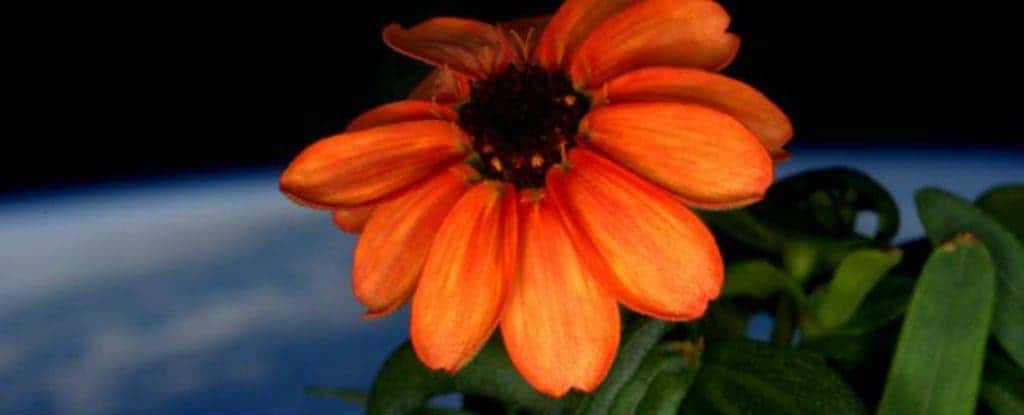Remember this article we wrote in November about the astronaut crew that got the longest green thumbs in history by planting a small garden on the ISS?
Well, their flowers have gone in full bloom. This hints at what might be possible on a lunar or even Martian settlement in the not-so-distant future. And we’re here to tell you all about how Scott Kelly and his colleagues managed to grow flowers in a metal box zipping around the Earth with no sunlight and having only limited water and gravity while I can’t even keep a cactus alive.

This bright orange zinnia was grown in the Vegetable Production System (also known as the gloriously puny “Veggie”), a deployable unit built to sustain a range of crops including lettuce — the first space-grown crop that the ISS taste-tested in August.
Veggie comes equiped with LED lighting and a nutrient distribution system for the plants inside, relying on the surrounding cabin to maintain an optimal environment inside it’s plastic-wrapped growth chamber. Still, it hasn’t been easy for the crew to grow the flowers, and as much as Veggie helped, it also worked agains them.
“There was mould, drought, and flooding in the roots. There were gardening guidelines, urgent, 4am phone calls, and distressed tweets. Some plants didn’t make it and had to be clipped off,” Lonnie Shekhtman reports for The Christian Science Monitor.
Around Christmas the flowers started to get mouldy because of a humidity build-up inside the plastic-wrapped chamber. Early efforts to ventilate the chamber dried out the plants, killing two of the crew’s zinnias. After weeks of tweaking however, the crew figured out how to use fans to gently dry out the plants and two survived to blossom fully over the weekend.

While they’re not the first plants to be grown in space (the Guiness Book of Records gives that distinction to the 1982 Russian astronauts who grew Arabidopsis seeds aboard the ISS) they’re certainly the most beautiful yet. And these plants’ story, with its ups and downs, will play a huge in our eforts to grow our food on other planets in the future.
“The unexpected turns experienced during this Veggie run have actually offered bountiful opportunities for new learning and better understanding of one of the critical components to future journeys to Mars,” says NASA.
via ScienceAlert


